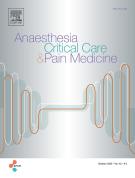Waveforms-guided cycling-off during pressure support ventilation improves both inspiratory and expiratory patient-ventilator synchronisation - 24/11/22
 , Anita Orlando a, Isabella Maria Bianchi b, Roberta Puce a, Eric Arisi a, Giulia Salve b, Giuseppe Maggio a, Silvia Mongodi a, Marco Pozzi a
, Anita Orlando a, Isabella Maria Bianchi b, Roberta Puce a, Eric Arisi a, Giulia Salve b, Giuseppe Maggio a, Silvia Mongodi a, Marco Pozzi aHighlights |
• | Synchronisation requires time at the patient’s bedside. |
• | Default settings are often inadequate. |
• | Patients often require ventilator settings re-adjustments. |
• | It is important to optimise cycling-off phase to improve synchronisation. |
• | By acting on cycling one can facilitate the triggering phase as well. |
• | Automated software can manage synchronisation during pressure support ventilation. |
Abstract |
Objective |
To test the performance of a software able to control mechanical ventilator cycling-off by means of automatic, real-time analysis of ventilator waveforms during pressure support ventilation.
Design |
Prospective randomised crossover study.
Setting |
University Intensive Care Unit.
Patients |
Fifteen difficult-to-wean patients under pressure support ventilation.
Interventions |
Patients were ventilated using a G5 ventilator (Hamilton Medical, Bonaduz, Switzerland) with three different cycling-off settings: standard (expiratory trigger sensitivity set at 25% of peak inspiratory flow), optimised by an expert clinician and automated; the last two settings were tested at baseline pressure support and after a 50% increase in pressure support.
Measurements and main results |
Ventilator waveforms were recorded and analysed by four physicians experts in waveforms analysis. Major and minor asynchronies were detected and total asynchrony time computed.
Automation compared to standard setting reduced cycling delay from 407 ms [257-567] to 59 ms [22-111] and ineffective efforts from 12.5% [3.4-46.4] to 2.8% [1.9-4.6]) at baseline support (p < 0.001); expert optimisation performed similarly. At high support both cycling delay and ineffective efforts increased, mainly in the case of expert setting, with the need of reoptimisation of expiratory trigger sensitivity. At baseline support, asynchrony time decreased from 39.9% [27.4-58.7] with standard setting to 32% [22.3-39.4] with expert optimisation (p < 0.01) and to 24.4% [19.6-32.5] with automation (p < 0.001). Both at baseline and at high support, asynchrony time was lower with automation than with expert setting.
Conclusions |
Cycling-off guided by automated real-time waveforms analysis seems a reliable solution to improve synchronisation in difficult-to-wean patients under pressure support ventilation.
Le texte complet de cet article est disponible en PDF.Abbreviations : ICU, Auto, ETS, Std, Opti, PSV, CD, TD, IE, AT, RR, TV
Keywords : Asynchronies, Cycling, Pressure support ventilation, Mechanical ventilation, Patient-ventilator interaction, Hyperinflation
Plan
Vol 41 - N° 6
Article 101153- décembre 2022 Retour au numéroBienvenue sur EM-consulte, la référence des professionnels de santé.
L’accès au texte intégral de cet article nécessite un abonnement.
Déjà abonné à cette revue ?

